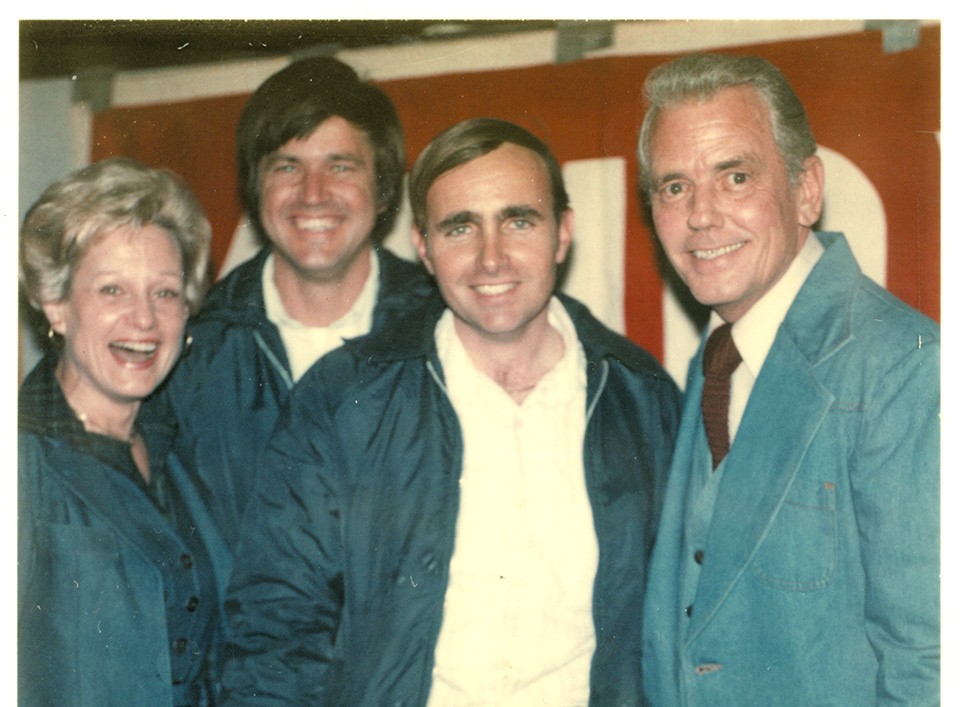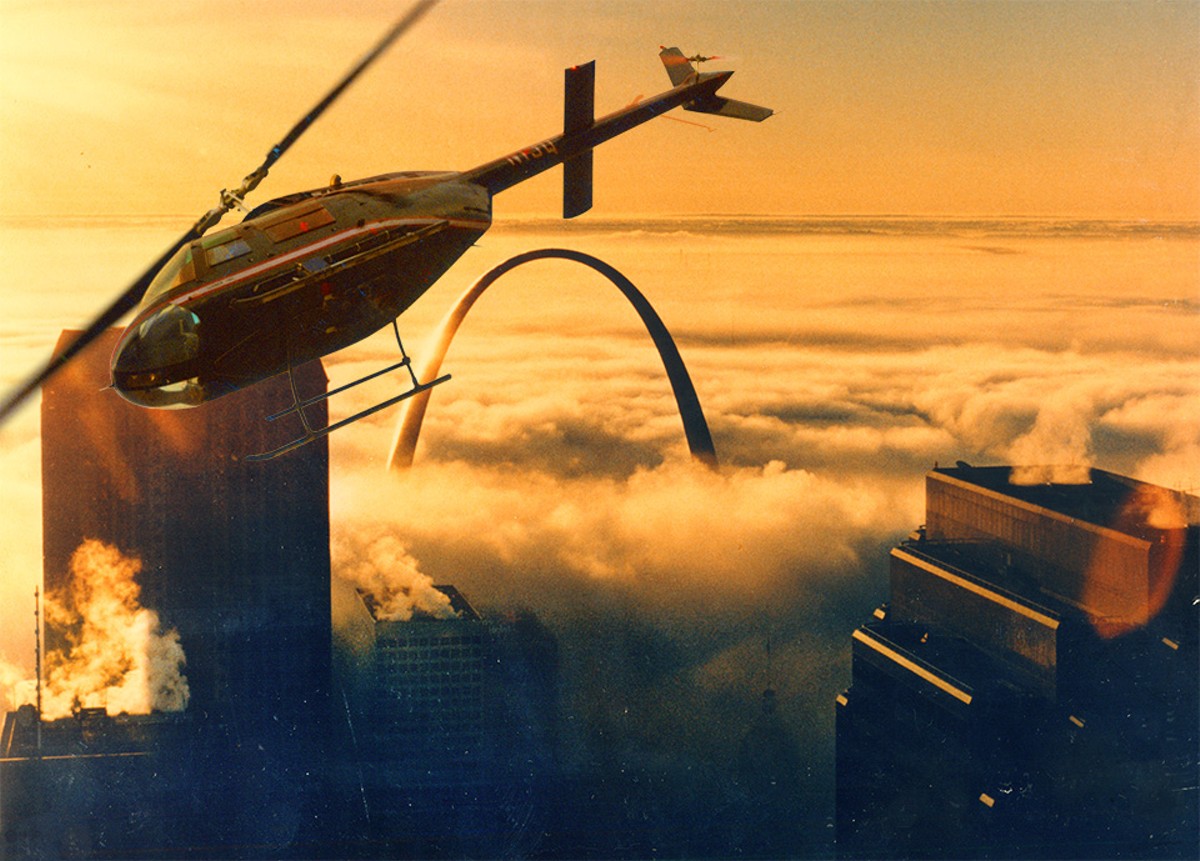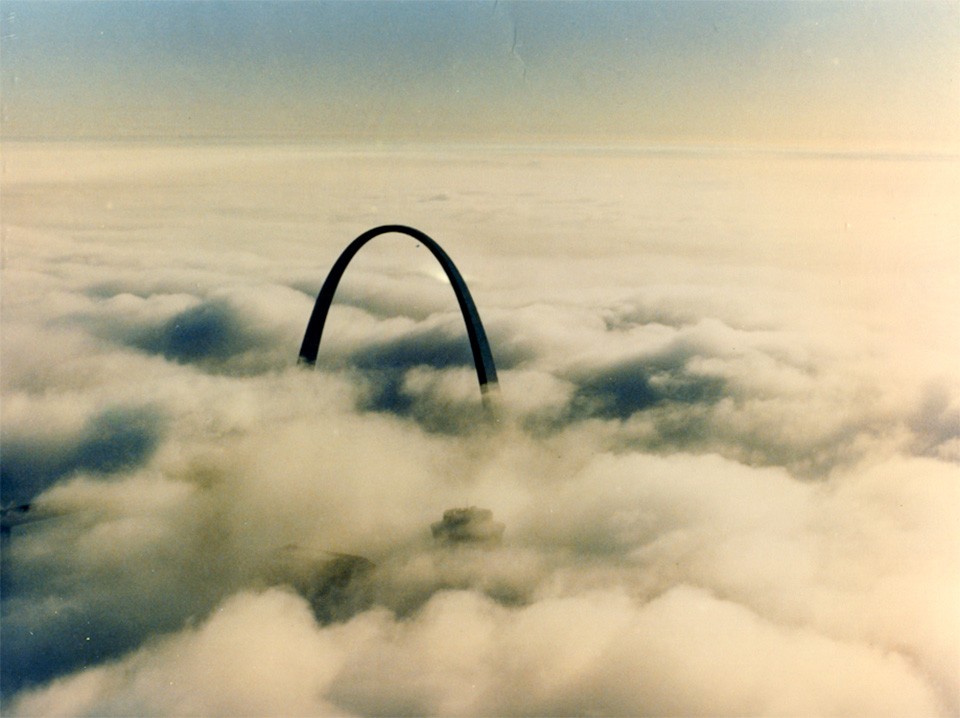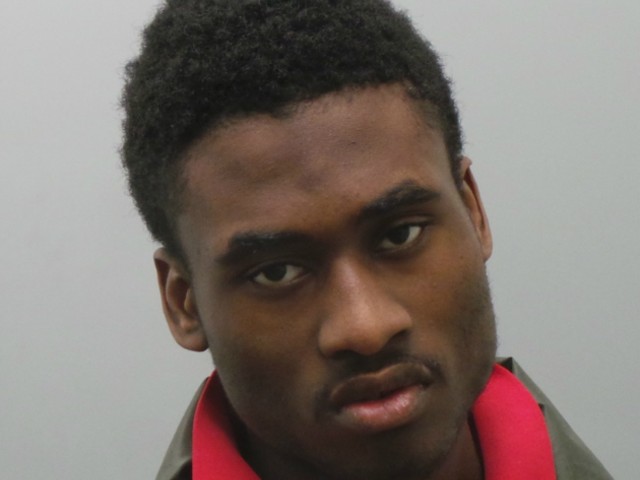
Allen Barklage first became a media darling in 1976, with a headline that read, "Tourist's Copter Ride Ends in the River." The St. Louis Post-Dispatch reported that a family had entrusted Barklage with giving a helicopter ride to their daughters: thirteen-year-old twins and their six-year-old sister.
Seconds after takeoff, though, the rear rotor jammed. Barklage did the only thing he could do — he turned off the engine, sending the aircraft into a 40-foot plunge and a jarring water-landing on its twin pontoons.
The twins claimed they wanted to finish the helicopter ride. Their mother told the paper, "We've all had enough excitement for one day."
Barklage, though, never seemed to reach that point. Around that time, he started flying around with KMOX's Don Miller. When Miller took days off, Barklage pulled double duty, doing both the flying and the reporting.
The helicopter news business was booming in St. Louis. By the final years of the 1970s, even local media stations had realized that the incredible popularity of traffic reporting outweighed the cost. At one point, KMOX reportedly spent upwards of $100,000 a year to keep Miller on (and in) the air.
Commercial flights kept Barklage and Hoffmeyer busy, too. At their employer, Fostaire Helicopters, it was common for the two pilots to swap jobs throughout the day just to keep up with the demand.
That's what happened on May 24, 1978. Hoffmeyer was tied up with a Post-Dispatch photographer who needed snapshots of Six Flags, but he had another job waiting at a floating heliport on the St. Louis riverfront, a passenger who had chartered a 5:30 p.m. flight for an aerial survey.
Running late, Hoffmeyer radioed Barklage, asking if he could reschedule the charter flight or ask the passenger to wait 30 minutes. But Barklage had just returned early from another job. "Don't worry, I'll take this one," he told his friend.
Hoffmeyer remembers telling Barklage everything he knew about the charter, which wasn't much: Some real estate agent wanted to look at property. It seemed unremarkable at the time.
"I didn't even know her name," Hoffmeyer says.
Soon, the entire country would.
Barbara Oswald joined the U.S. Army in 1968, one year after Barklage entered flight school. She was a single mother of five whose childhood began in poverty and essentially ended at age twelve when she was deposited in a Lutheran orphanage. At seventeen, she became a sex worker to pay the bills. Most people knew her as "Bobbie."
"Prostitution, it wasn't something she wanted to do," says one of Oswald's daughters, speaking about her mother for the first time publicly. She changed her name decades ago and asks to be identified only by the initials MR.
Growing up, MR says her mother's profession wasn't a secret to her.
"She actually ran a small brothel in an apartment building in Maplewood," she says. "She'd take me to the White Castle, and she taught me how to spot undercover cop cars in the parking lot. 'See that one? It has a no whitewalls and no hubcaps. That's a police car.'"
In 1968, Barbara Oswald extricated herself from a marriage with an ex-con, someone whom MR, who was thirteen at the time, remembers as manipulative and verbally abusive to her mother. Oswald found herself raising five kids alone.
But she surprised her family by joining the Army at 33, attending air-traffic school while the kids went to live with relatives. Oswald advanced quickly, and in 1973 she was transferred back to St. Louis and became a recruiter.
After her death, Oswald's past would be unearthed by the national media. The New York Times reported that she was known to local reporters — she'd even tried to sell her story of orphanhood and prostitution to the St. Louis Globe-Democrat to pay to bail out her criminal husband.
"I don't think Bobbie ever thought she did anything wrong," one Globe-Democrat reporter remarked to the Times. "Her view of things was that this was a jungle and you had to be alert and willing to kill to survive in it."
The military seemed to provide new opportunities. "It suited her and she did really well," MR recalls. "She made rank right away."
But then Oswald fell off a motorcycle. Dealing with a serious back injury, Oswald was placed on disability leave and with no certain future. She moved her family to Richmond Heights and enrolled in a master's program at Columbia College.
It was while researching a paper that she encountered the book that would change her life all over again. The Fox is Crazy Too is a pulpy, all-too-smitten biography of a convicted hijacker named Garrett Trapnell, who was then doing time in an Illinois prison. Its pages portrayed Trapnell as a devil-may-care rogue, a romantic figure who married and exploited multiple wives, robbed a string of banks in Canada and used the insanity defense to his advantage. The paperback's cover proclaimed Trapnell "Skyjacker! Supercon! Superlover!"
The author had included Trapnell's mailing address, and Oswald sent him a note. MR says, "She wrote what was probably an innocent letter to Trapnell with whatever questions she had. That's how it started. That's how he sucked her in."
MR, then 23 years old and in the military herself, noticed a change in her mother during their occasional visits.
"I remember seeing her one day, and she was really dressed up," MR says. "She looked nice, makeup, pantsuit from Saks. I said, 'Where are you going?'"
Her mother answered, "I'm going to visit Garrett."







